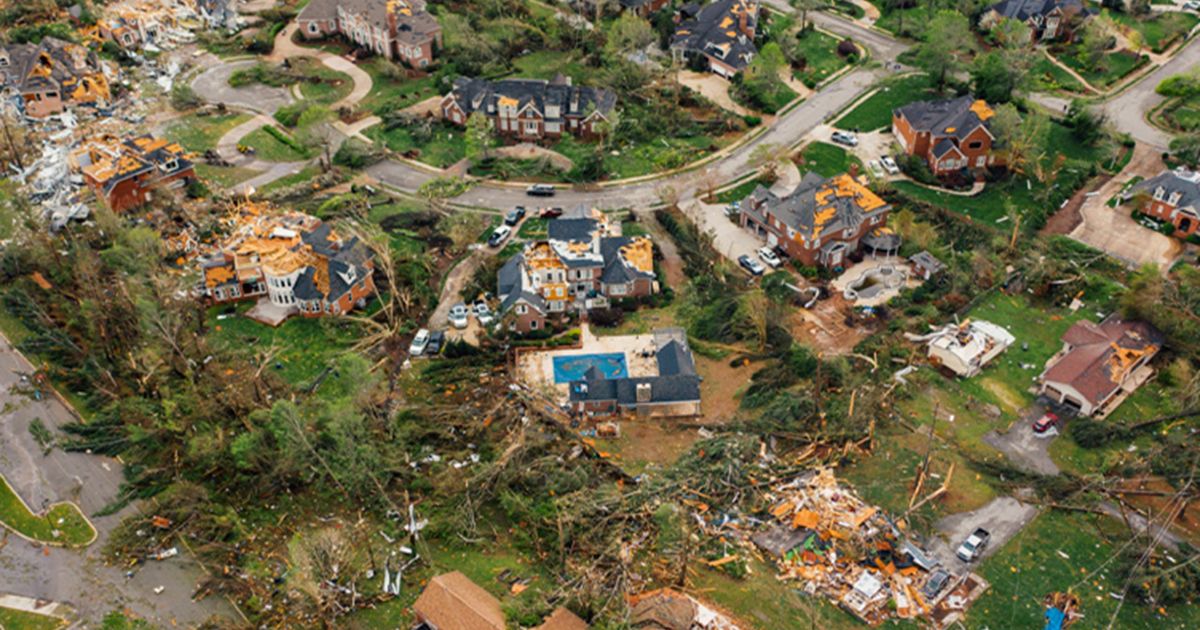Climate-driven hazards are reshaping the housing market. That is according to a new analysis released on Wednesday by Realtor.com.
According to the report, more than one in four homes in the United States, representing about $12.7 trillion in real estate value, are exposed to severe or extreme risk from flooding, hurricanes, wildfires, and other climate-related threats.
“This is not a hypothetical problem. It is a clear and present danger,” said Joel Berner, senior economist at Realtor.com. “More than one in four homes has a significant chance of damage from flooding, hurricanes, wildfire, or wind, and many homeowners do not even realize it.”
These hazards are contributing to rising insurance premiums and complicating decisions for homebuyers across the nation, including in North Carolina.
Flood Risk Often Overlooked in the Triangle
While Raleigh and the surrounding region are not among the country’s highest-risk markets, Berner said many Triangle homeowners underestimate the possibility of flooding.
Realtor.com’s data, which uses modeling from the nonprofit First Street Foundation, shows that a significant number of homes in the Raleigh metro area face flood risks not identified on FEMA’s official maps. That means buyers may be purchasing homes without realizing their true exposure.
“FEMA’s maps do not always reflect today’s reality,” Berner said. “We are seeing homes outside those designated flood zones experience major flooding. That is a big blind spot for buyers.”
Nationwide, nearly 6 million homes face severe or extreme flood risk over the next 30 years but are not listed in FEMA’s Special Flood Hazard Areas, the report found.
Rapid Growth Brings New Challenges
Jason Kogok, a Triangle real estate agent for 20 years and a professor at North Carolina State University’s Peter Pappas Real Estate Development Program, said the region’s fast-paced growth has increased stormwater challenges, which climate change is intensifying.
“We are not dealing with the same coastal hurricane or wildfire risks you see in other parts of the country,” Kogok said. “But our area has developed at a really fast pace, and as rains get heavier, that water has to go somewhere. That is the missing link a lot of people in Raleigh are not giving enough credit to.”
Kogok said the next generation of planners and developers is approaching climate risk differently, especially his graduate students at N.C. State.
“They fully understand climate change. There is no debate for them,” he said. “They are being creative with building design, materials and stormwater solutions. The challenge is connecting that innovation with developers and decision-makers who are still very focused on the bottom line.”
Rising Insurance Costs Affect Affordability
The Realtor.com report also highlights how climate risk is affecting insurance markets nationwide. As extreme weather events become more common and unpredictable, many homeowners are facing higher premiums or policy non-renewals, even in areas previously considered low risk.
“Even if you have not experienced a hurricane, wildfire or flood, you are likely already paying more in your insurance premiums because of overall uncertainty,” Berner said.
In North Carolina, the effects of Hurricane Helene last year accelerated insurance rate hikes. Some residents are struggling to find affordable coverage, and others have been given non-renewal notices by their insurers.
What Homebuyers Should Do
Kogok advises Triangle homebuyers to take a proactive approach when evaluating properties:
Inspect crawl spaces and foundations for signs of moisture or flooding.
Review multiple sources of risk data, including FEMA maps and independent tools like Talk to neighbors about drainage and runoff patterns.
Consult an insurance agent to understand potential gaps in coverage.
“You have to look beyond the listing,” Kogok said. “Talk to your insurance broker, crawl under the house, and ask the right questions. The cost of underestimating climate risk can be huge.”
A Growing Issue for North Carolina
Experts say climate-related costs will continue to influence affordability and housing decisions in North Carolina as the state faces heavier rain events, stronger storms and increasing development pressure.
“Climate change is already impacting your premiums, your ability to get coverage and, ultimately, the value of your home,” Berner said. “Homebuyers need more information and better tools to prepare for what lies ahead.”
